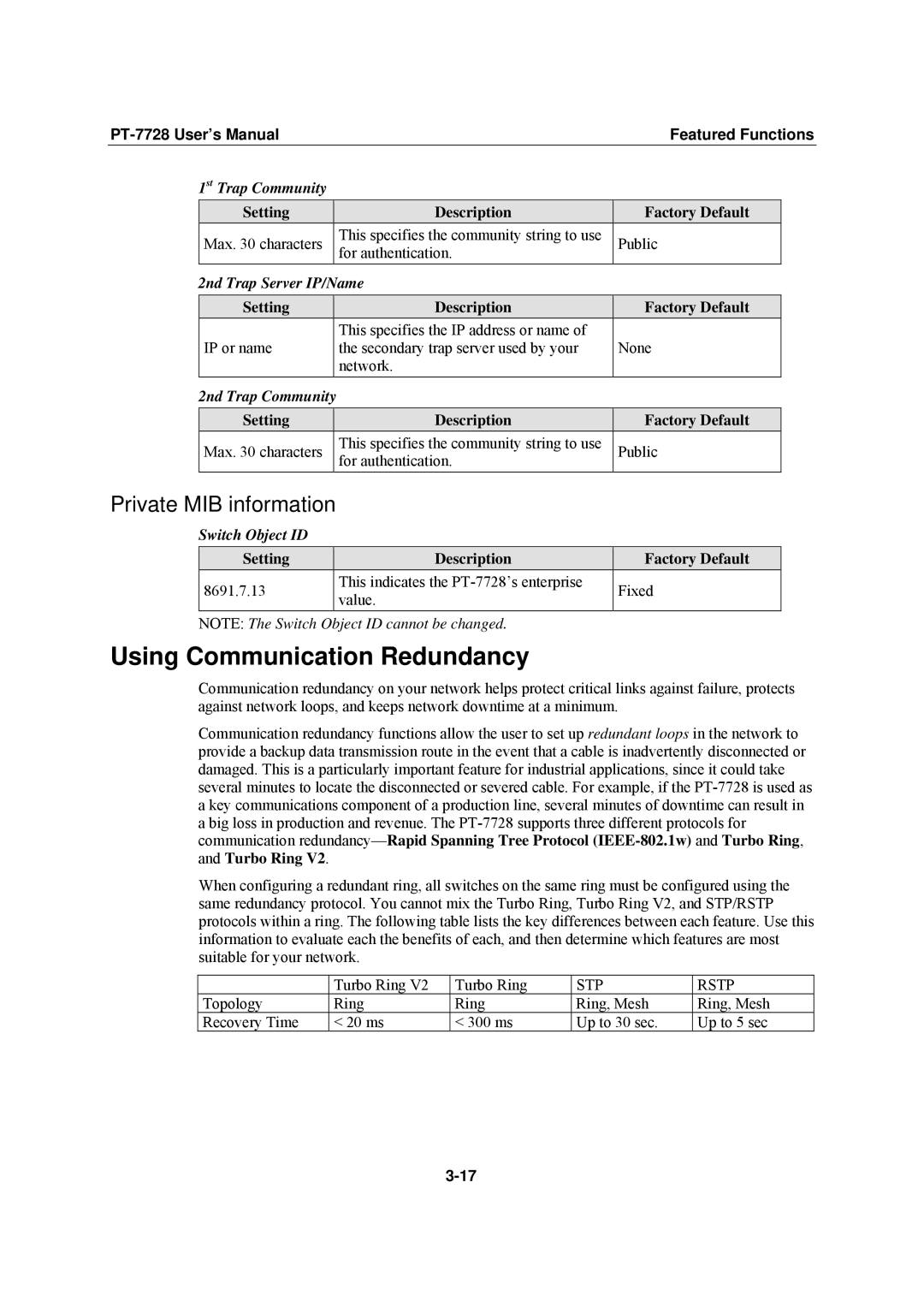| Featured Functions | |||||
1st Trap Community |
|
|
| |||
| Setting |
|
| Description | Factory Default |
|
| Max. 30 characters |
| This specifies the community string to use | Public |
| |
|
|
|
| for authentication. |
|
|
2nd Trap Server IP/Name |
|
| ||||
|
|
|
| |||
| Setting |
|
| Description | Factory Default |
|
| IP or name |
| This specifies the IP address or name of | None |
| |
|
| the secondary trap server used by your |
| |||
|
|
|
| network. |
|
|
2nd Trap Community |
|
|
| |||
| Setting |
|
| Description | Factory Default |
|
| Max. 30 characters |
| This specifies the community string to use | Public |
| |
|
|
|
| for authentication. |
|
|
Private MIB information |
|
|
| |||
Switch Object ID |
|
|
| |||
|
|
|
| |||
| Setting |
|
| Description | Factory Default |
|
| 8691.7.13 |
|
| This indicates the | Fixed |
|
|
|
| value. |
| ||
|
|
|
|
|
| |
NOTE: The Switch Object ID cannot be changed. |
|
| ||||
Using Communication Redundancy
Communication redundancy on your network helps protect critical links against failure, protects against network loops, and keeps network downtime at a minimum.
Communication redundancy functions allow the user to set up redundant loops in the network to provide a backup data transmission route in the event that a cable is inadvertently disconnected or damaged. This is a particularly important feature for industrial applications, since it could take several minutes to locate the disconnected or severed cable. For example, if the
When configuring a redundant ring, all switches on the same ring must be configured using the same redundancy protocol. You cannot mix the Turbo Ring, Turbo Ring V2, and STP/RSTP protocols within a ring. The following table lists the key differences between each feature. Use this information to evaluate each the benefits of each, and then determine which features are most suitable for your network.
| Turbo Ring V2 | Turbo Ring | STP | RSTP |
Topology | Ring | Ring | Ring, Mesh | Ring, Mesh |
Recovery Time | < 20 ms | < 300 ms | Up to 30 sec. | Up to 5 sec |
